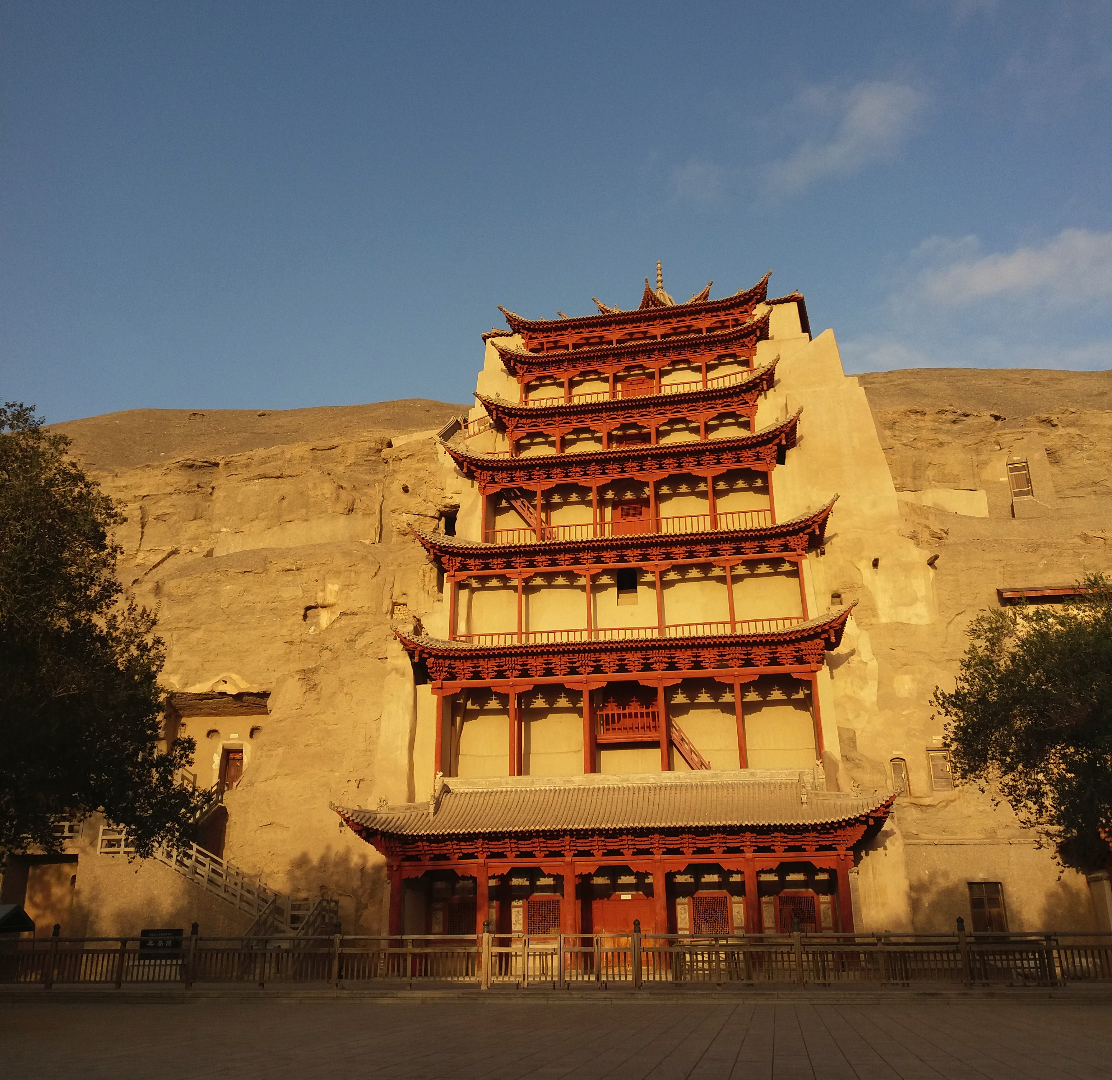
Dunhuang Research
The complex research program of the Thousand Buddha Cave Temples
|
|
Dunhuang is the first or last station on the northern Silk Road connecting China with the West, located in the northwestern part of present-day China, in Gansu province. The famous temple complex carved into the sandstone wall called Caves of the Thousand Buddhas are situated 25 kilometers away from the oasis of Dunhuang. Of the 735 cave temples of the Mogao Caves, also known as the Caves of the Thousand Buddhas, 492 are painted. The Mogao Caves were inscribed on the World Heritage List in 1987. With their artistic, cultural and religious diversity, they are situated on the edge of the Gobi Desert like a gallery in the desert. In 1944, the Chinese government established an Academy of Arts (originally known as the Dunhuang Art Research Institute) in the immediate vicinity of the caves to protect the caves and to promote domestic and international research on their cultural heritage. Since then, the Dunhuang Academy has grown into a research base with extensive international connections, a digital gallery of pictures, and travelling exhibitions. It also maintains close relationships with Hungarian institutions engaged with Dunhuang research. Picture 1: Nine-storey pagoda of the Mogao Caves, also known as the Caves of the Thousand Buddhas. The cave behind the pagoda is number 96 and houses the Maitreya Buddha statue which is nearly 35 m high. This cave was built in 695 by a donation from Wu Zetian, the only empress in Chinese history. (Photo of the author, Judit Bagi, 01.09.2018) Dr. Pál Miklós (1927-2002), former director of our Museum, also participated in the research undertaken for the protection of the heritage of the caves during his research trip to Dunhuang. Pál Miklós arrived in Dunhuang on 8 August 1953 and during his stay of nearly a month he became close friends with the painter Duan Wenjie who later became the director of the research institute. Pál Miklós made the art of Dunhuang accessible to a wider Hungarian audience with his book The Caves of Thousand Buddhas of Tunhuang, published in 1959. His research has established a tradition of Dunhuang Studies at the Hopp Museum. The current research has three levels: the aim of the museum is to establish the Archive of Pál Miklós; to revive and present the history of the Hungarian Dunhuang Studies, beginning in 1879 with the expedition of Béla Széchenyi, in the form of a future exhibition and volume of essays and studies; and to conduct fieldwork and museological research using interdisciplinary research methods to explore the connections between the living traditions of the ancestor cult and Buddhist rites along the southwestern Silk Road from the Dunhuang area and the Ancient Tea Horse Road. Picture 2: Flying Apsaras. Detail of a wall painting from Cave 320 of the Caves of the Thousand Buddhas in Duhuang. China, first half of the 1950s, Rongbaozhai workshop, colour woodcut on paper, mounted on steel-grey brocade, gift of the Chinese Embassy in Hungary. Inv. No: 55.713.1. |
